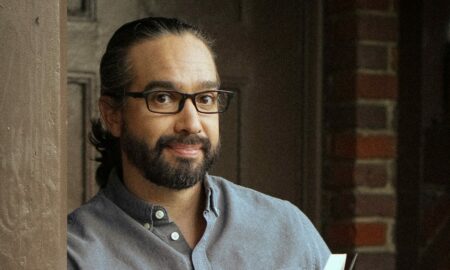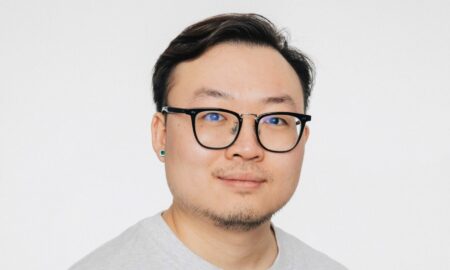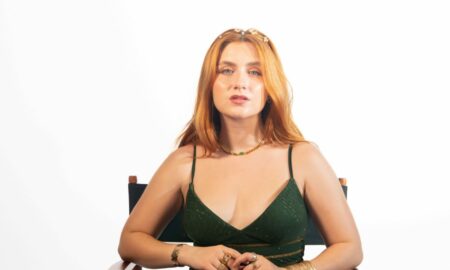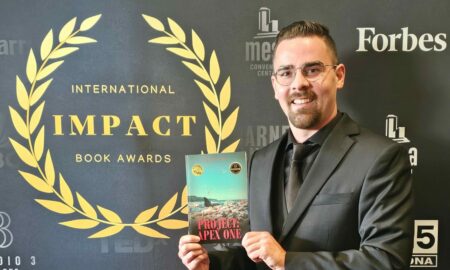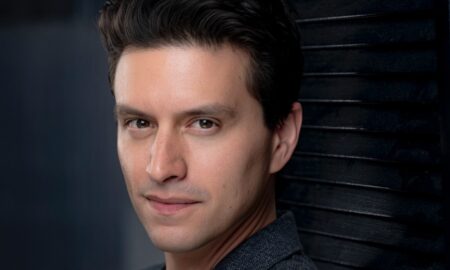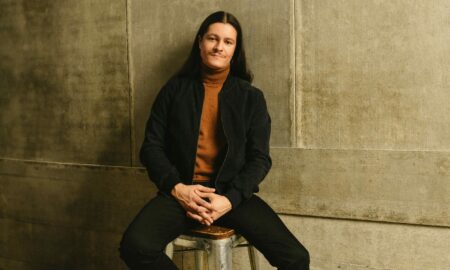

Today we’d like to introduce you to Robin Conrad.
Thanks for sharing your story with us Robin. So, let’s start at the beginning and we can move on from there.
I fell in love with dance when I was about seven and just had that classic dancer personality type—a relentless work ethic servicing the rush of hard-won bursts of the sublime. Dancing and performing were my refuge—I was in my first real show at PCPA (Pacific Conservatory Theatre) at a very young age (probably also around seven) and when I wasn’t performing, I was working as quite possibly the youngest usher they’d ever had. In college at UC Irvine, I studied dance and attended summer festivals at Bates, Jacob’s Pillow and the like. Then, after living and dancing in New York for a few years, I returned to Southern California to get an MFA from CalArts. I began staging my own work around L.A., teaching dance at the high school and college levels, movement coaching and directing for actors, and choreographing for film, television, music videos, and commercials. I’ve done multiple projects with Sofia Coppola, choreographed videos for the White Stripes, Scissor Sisters, and others, as well as creating dance sequences for various television shows, including Madam Secretary and Suburgatory. I’m currently finishing my dissertation for a Ph.D. that focuses on embodied knowledge through the lens of dance in collaboration with interdisciplinary theory!!!
Has it been a smooth road?
I’ve gotten to travel the world—performing, teaching, presenting work and research on fascinating and complex topics, creating dance work involving all sorts of incredible people, from homeless women, novice and professional dancers, to celebrities. And I’m incredibly grateful for all of that. But I have to be honest: pursuing a career in the arts is almost always challenging and dance especially. It’s a hard field to make a living in and can wear your body down over time. So, it can be a bit like being a pro athlete in the least lucrative sport there is. For example, as a choreographer, you obviously want to make work and put it out there. But that often means, you have to stage it yourself, which is expensive and rarely turns a profit. That said, it’s also a beautiful and amazing means of human expression, arguably the most profound because life is literally a journey we take through movement—to dance is to be for a few moments, truly, fully alive.
So, you have to be hardworking and resourceful, which I am, and most dancers are. But the shadow side of that personality type many dancers have is that while we’re always striving for excellence, we can often feel like we’re never quite good enough. I would say it’s important to learn as early as possible to be kind to yourself. (I’m still working on this!)
Please tell us more about your work, what you are currently focused on and most proud of.
My work in dance can be divided into three areas: artist (choreographer and movement director), educator, and scholar. As a choreographer, I work in both the commercial and concert worlds. My commercial work mostly revolves around helping the director achieve her vision for the scene or sequence, which doesn’t just mean the movement, but the quality of the movement, the energy of the scene. Is it funny, sad, sexy? Many times, the background dancers are professionals and pick up material quickly, but the lead actors are often not dancers at all, so you have to be prepared to meet them where they are, put them at ease that you’ll make them look good, and then build movement they can achieve that will fulfill the director’s idea. So, in the commercial realm, I think I’m known for being a prepared, enthusiastic collaborator who can quickly pull together fresh, original movement in a variety of styles and positively coach the actors to get their best performance.
In my concert work, I try to realize my own vision, which although it lacks the pressures of being on a set and so forth, is actually much more challenging for me. Usually, my work lives at the intersection of the political and the personal, the heartbreaking and the humorous. My work has been performed at many venues in L.A. and around the globe, including at the REDCAT at Disney Hall, The Skirball Center, the Scotiabank Dance Centre in Vancouver, and the DUMBO Dance Festival in Brooklyn. I think a good dance piece should draw in an audience in the same way a quality work of drama would—make them think, but only after they’ve finished crying and laughing. Because dance relies on the moving body, I think it has the capacity to be compellingly human and incredibly entertaining, which is a word that’s sometimes unfashionable in the more academic and concert dance worlds but shouldn’t be. I would say what I’m most proud of as a dance artist is creating something of quality for the audience, while at the same time creating a quality experience for my dancers and collaborators so that they feel heard, valued, and respected.
I’m also a teacher and was tenured at a college in Orange County before leaving it to pursue my Ph.D. I’ve also taught at high schools, Occidental College, and Cal Poly San Luis Obispo, as well as leading master classes at conferences and festivals around the world. I pride myself on being a really well-prepared, passionate teacher who demands a lot from her students but keeps things lively. I teach all levels and believe that dance is a discipline of study uncommonly well-suited to imparting larger life lessons.
Which brings me (finally!) to my work as a scholar. I’m planning to finish my Ph.D. at Texas Woman’s University in the next few months. I’m using interdisciplinary theory (from phenomenology, social and cognitive science, and dance and performance studies) to look at how dancing bodies create meaningful experiences and generate alternate knowledge that we can’t always portray through language (we have to dance it out!). I recently presented a paper on my research at the prestigious Dance Studies Association Conference in Valletta, Malta. One of my research sites is the amazing Sweat Spot dance studio in Silverlake; the other is a wonderful L.A. tango studio called Oxygen Tango. I didn’t have a background in critical theory before entering the program, so it’s been both challenging and fascinating to develop my skills as a writer—integrating all this incredibly dense theory to explore aspects of movement and dance that are totally vital to how we experience the world.
So much of the media coverage is focused on the challenges facing women today, but what about the opportunities? Do you feel there are any opportunities that women are particularly well positioned for?
I strongly believe that we need more women integrated into all positions that are still commonly held primarily by men. I’m thrilled to see some change with the Democrats in the last election, sending a record number of women to Congress! In dance, there are a number of successful male choreographers and it’s more challenging for women on that path. I hope that more and more women AND men support increased opportunities for women and underrepresented groups across the board so we can really have a wealth of different perspectives and approaches, making us all the richer for it!
Contact Info:
- Website: www.robinconrad.com
- Phone: 323-252-3831
- Email: [email protected]
- Facebook: https://www.facebook.com/heyroco/




 Image Credit:
Image Credit:
Lindsey Burwell
Getting in touch: VoyageLA is built on recommendations from the community; it’s how we uncover hidden gems, so if you know someone who deserves recognition please let us know here.














